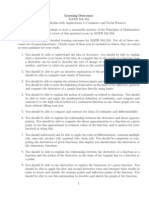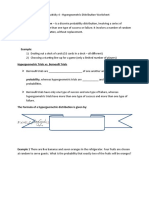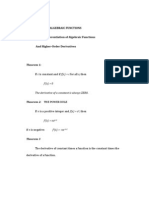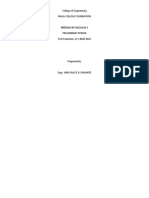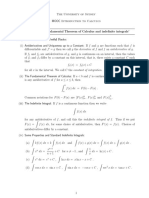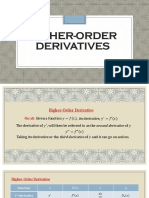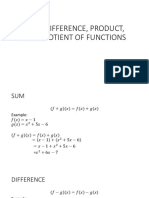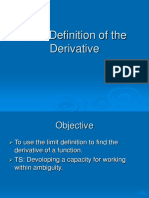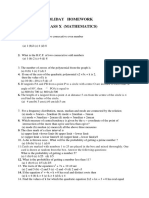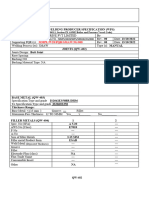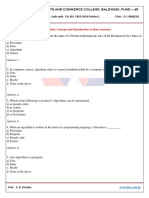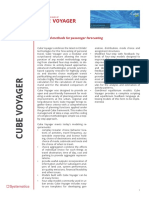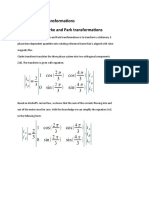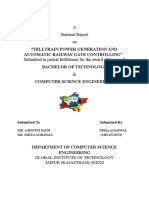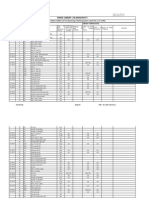0% found this document useful (0 votes)
784 views5 pagesLecture 12. Derivatives of Log - Functions
This document discusses differentiating logarithmic functions using implicit differentiation. It begins by finding the derivative of y=logb x, which is dy/dx = 1/(x ln b). It then specifically considers the natural logarithm with b=e, where ln e = 1, simplifying the formula to dy/dx = 1/x. Examples are then provided to demonstrate differentiating more complex logarithmic functions using implicit differentiation and the chain rule, as well as using logarithmic differentiation to simplify derivatives of complicated expressions. The document concludes by expressing the number e as the limit as x approaches 0 of (1 + x)1/x.
Uploaded by
Beshoy AdelCopyright
© © All Rights Reserved
We take content rights seriously. If you suspect this is your content, claim it here.
Available Formats
Download as DOCX, PDF, TXT or read online on Scribd
0% found this document useful (0 votes)
784 views5 pagesLecture 12. Derivatives of Log - Functions
This document discusses differentiating logarithmic functions using implicit differentiation. It begins by finding the derivative of y=logb x, which is dy/dx = 1/(x ln b). It then specifically considers the natural logarithm with b=e, where ln e = 1, simplifying the formula to dy/dx = 1/x. Examples are then provided to demonstrate differentiating more complex logarithmic functions using implicit differentiation and the chain rule, as well as using logarithmic differentiation to simplify derivatives of complicated expressions. The document concludes by expressing the number e as the limit as x approaches 0 of (1 + x)1/x.
Uploaded by
Beshoy AdelCopyright
© © All Rights Reserved
We take content rights seriously. If you suspect this is your content, claim it here.
Available Formats
Download as DOCX, PDF, TXT or read online on Scribd
/ 5


















